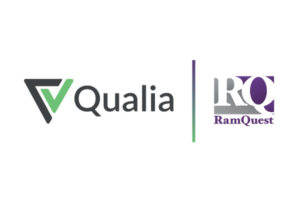Most businesses have successfully progressed in cloud adoption as part of their digital transformation efforts. But is it paying off? While they may be reaping the benefits of cloud deployment, a recent report suggests there’s still significant room for improvement.
In 2022, 94% of enterprises reported overspending on cloud services. But it’s not just larger companies – over half of SMBs spend more than $1.2 million on cloud technology like Azure or AWS. At a time when budgets are under strain, it’s no surprise that priorities are now shifting to making sure that those costs are optimized.
One of the primary benefits of operating in the cloud is the flexibility and scalability of resources. Many businesses realized the benefits of scaling up with the cloud when growth demands it, but they haven’t seen their systems and costs scale DOWN as the market has cooled and the organization size has reduced.
In this article, we discuss Azure cost optimization strategies and what can be done to ensure that the resources paid for are being maximized as business needs change.
3 Considerations When Implementing Azure Cost Optimization Strategies
Having flexible access to resources is only really beneficial when matched by an equally agile business strategy.
The default for business is to focus primarily on growth and to plan according to expanding business needs. But as many businesses experienced economic uncertainty during 2023, sometimes economic conditions require scaling back on resources. If this is not done quickly and strategically, it could place the business at a competitive disadvantage.
When looking for Azure cost optimization strategies, these considerations should be prioritized:
Pricing and Payment Options
Microsoft Azure has multiple pricing options, to the point where determining the right price structure to fit your business needs can be challenging. Additionally, when looking to implement cost optimization strategies, simply cutting back on resources isn’t always the best solution.
Azure offers discounts based on different types of usage and resources. By understanding the different pricing and payment options and how they can be leveraged, it’s possible to optimize costs without having to forgo resources.
Monitoring
By monitoring resource use and costs, managers can get a clearer picture of where to optimize costs. During initial cloud deployment, resources are purchased based on estimates and projections.
It’s only after some time and accurate monitoring that leaders can see if resources are being used efficiently.
Agility as a strategy
Regardless of size, becoming more agile is necessary if businesses hope to remain competitive amid uncertain economic conditions. The cloud is the ideal mechanism to support agile strategies. When decision-makers define what scaling up or down looks like in terms of resources, it makes it easier to match this to your Azure cost optimization strategies.
With these considerations in mind, our team of Azure experts have highlighted our top three strategies for optimizing your cloud investments:
Try these 3 Azure Cost Optimization Strategies:
1. Reserved Instances:
Reserved instances allow businesses to reserve resources in advance at a discounted price. With Azure, this can amount to significant savings over the normal pay-as-you-go pricing.
Reservations may include the use of virtual machines (VMs) or other Azure resources for a period of between 1 to 3 years. An additional benefit is that this can be structured through a monthly payment plan which supports budgeting.
Reserved instances are most effective for businesses with predictable workloads. If you know that you’ll need a VM or database for an extended period, reserving those resources in advance, and then being able to pay for them on a monthly basis, can result in significant cost savings.
2. Dynamic auto-scaling
When workloads are often changing, as is often the case for smaller businesses, Azure offers an auto-scaling feature. Without this, an alternative would be to provision according to the maximum capacity required. The downside of this approach is that it can result in over-provisions and overspending while underutilizing the resources.
Auto-scaling allows businesses to increase and automatically adjust the number of running instances based on workload. This makes it easier to scale up during peak workload times and avoid paying additional costs during off-times.
For small businesses. It is a powerful component of Azure cost optimization strategies. Plus it helps support operations through improved reliability. They avoid bottlenecks that can often frustrate employees during peak workday times.
3. Leverage Azure Cost Management Tools
When surveyed, many businesses cite that a lack of visibility is a major reason for overspending on the cloud. What can leaders do?
And even when they are able to see what the cost is, how are they to know what can be scaled back in lean times?
Azure Cost Management tools are specifically designed to overcome this and help businesses understand what resources they’re using and where possible cost savings could be achieved.
This is done by providing a cost breakdown by resource. Leaders can view how the resource is being used and determine if it aligns with their current business needs. Just being able to visualize this can highlight opportunities for cost optimization.
Monitoring can indicate usage trends which can help predict future needs based on current business operations. Building on this information, Azure Advisor supports managers by providing recommendations based on usage data. This includes highlighting best practices for resource performance, security, and availability, as well as ways in which this can be altered to generate cost savings.
Continually tracking and reviewing resources helps to ensure that the resources are not being underutilized, and that every opportunity to optimize costs is identified!
How an IT MSP can Help with Azure Cost Optimization Strategies
Experience and knowledge of cloud deployment plays a huge role in ensuring that cloud costs are optimized from the very beginning. With years of experience in Azure, Premier One provides Azure hosting and optimization services. Having overseen many deployments for small and large businesses alike, Premier One knows how to identify what cloud resources are needed and how to make them work for businesses.
This knowledge enables Premier One to apply best practices from different industry sectors. When approaching cloud optimization, every cent matters and having an IT partner that understands how to apply Azure cost optimization strategies is hugely valuable.
It takes a great deal of the guesswork out of the process. Plus, once the optimization project is complete, our team can take over managing and updating the environment for you – so you can focus on what you do best.
Knowing that the majority of companies admit to overspending on the cloud, the questions most ask are: Where do we start to optimize Azure? And how do we know the optimization strategies we use will result in cost savings?
With a proven track record in Azure cost optimization strategies, Premier One can answer your questions and help you get the most value out of your cloud resources. Learn more about our Azure and cloud services today!



